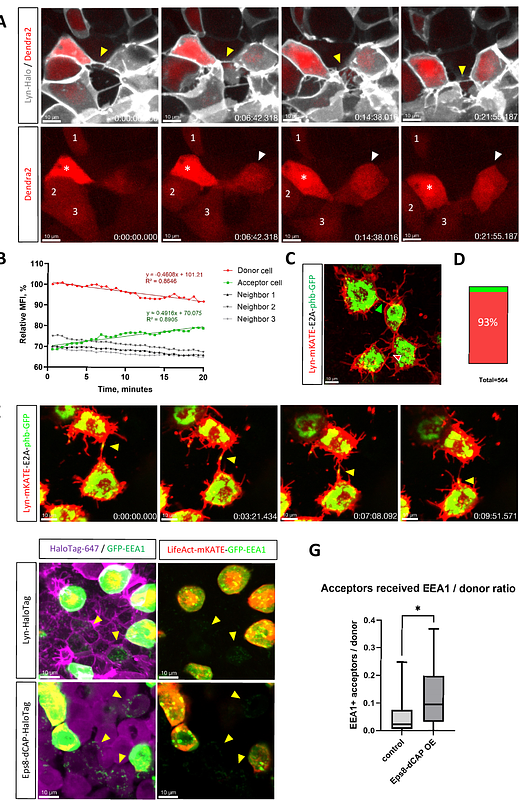Tunneling nanotubes enable intercellular transfer in zebrafish embryos

Tunneling nanotubes enable intercellular transfer in zebrafish embryos
Korenkova, O.; Liu, S.; Prlesi, I.; Pepe, A.; Albadri, S.; Del Bene, F.; Zurzolo, C.
AbstractTunneling nanotubes (TNTs) are thin intercellular connections facilitating the transport of diverse cargoes, ranging from ions to organelles. While TNT studies have predominantly been conducted in cell cultures, the existence of open-ended TNTs within live organisms remains unverified. Despite the observation of intercellular connections during embryonic development across various species, their functional role has not been confirmed. In this study, we performed mosaic labeling of gastrula cells in zebrafish embryos to demonstrate the coexistence of TNT-like structures alongside other cellular protrusions. These embryonic TNT-like connections exhibited similar morphology to TNTs described in cell culture, appeared to have similar formation mechanisms and could be induced by Eps8 overexpression and CK666 treatment. Most notably, to classify them as TNTs, we demonstrated their capability to transfer both soluble cargoes and organelles, which is a defining feature of open-ended TNTs. This study marks the first demonstration of functional TNTs in a living embryo.